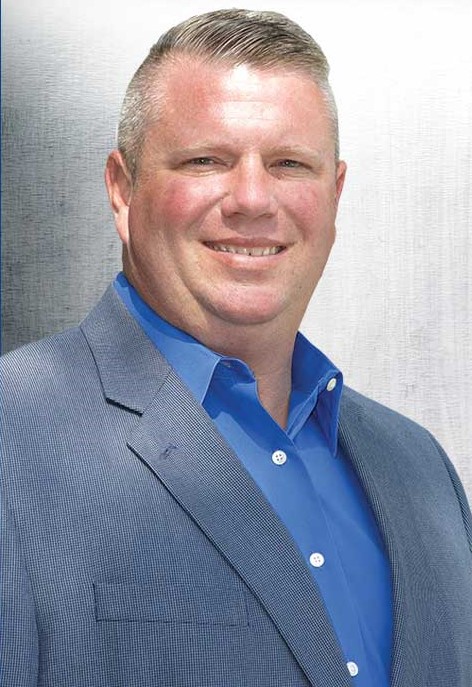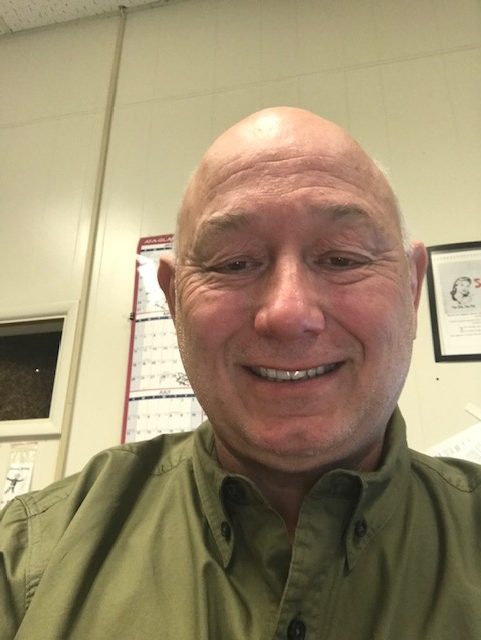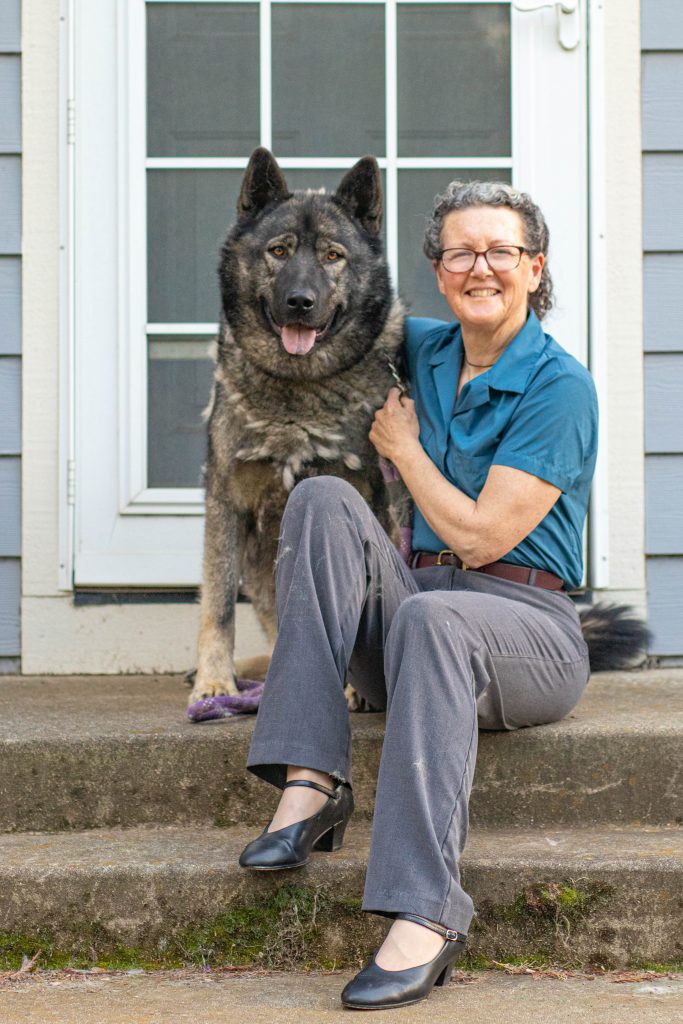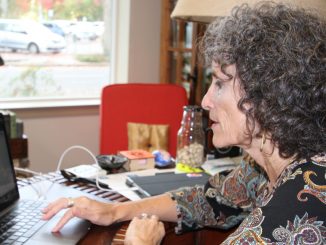
The questions:
1. What’s biggest issue facing Butte County?
2. How can you as a supervisor address that issue?
3. How should the county address homelessness and affordable housing?
4. What’s your assessment of water management across the county?
5. In what ways should the county address public safety issues?
6. What distinguishes you from the others on the ballot and the board?
7. Redistricting has resulted in a dramatic shift in the make up of districts 2 and 3. How do the changes affect priorities for you and district residents?
8. Should the Greenline remain firm?
9. What should the Board of Supervisors do locally to address climate change?
10. From the Spillway Crisis to wildfires to the pandemic, how do you assess the county’s response to disasters?
District 2

Peter Durfee
Chico police sergeant
[Editor’s note: Durfee, did not respond to the CN&R’s questions by deadline.]

Debra Lucero
Incumbent
1. What’s biggest issue facing Butte County?
I believe climate change, encompassing the water crisis and increase of wildfires in our area, will prove to be our largest challenge in the next few years. Since 2018, wildfires have consumed 17,500 homes in Butte County, exasperating an already dire housing supply. We built zero affordable housing in the past eight years in Chico but 219 percent of medium- to high-income housing. Disaster funding and tax credits are giving the city of Chico the opportunity to build nearly 1,000 affordable units by 2023. We need to build resilience in our citizens, our food and water supply systems, and keep affordable housing as a priority.
2. How can you as a supervisor address that issue?
We need to acknowledge the fact the western U.S. is drier and hotter. We are getting less rainfall, causing the drought and ultimately causing the premature drying out of fuels, which lead to catastrophic wildfires. As a supervisor, I sit on several committees that deal directly with climate change, i.e., the National Association of Counties’ Resilient Counties Advisory Board, which I chair. Supervisors throughout the country come together to discuss best practices, studies, ordinances and land-use policies. The water crisis can be addressed with local land-use policies and supporting good scientific research and best practices.
3. How should the county address homelessness and affordable housing?
We need to keep building—both transitional and permanent housing. (See answer No. 1.) The Pallet shelter is a start. We need an official homeless camp and/or parking facility (RV park situation).
4. What’s your assessment of water management across the county?
I’ve been vocal about the fact the county abdicated its role as the groundwater manager in the “white areas” [i.e., unincorporated] in 2017 through a resolution that was never vetted publicly but passed on a consent agenda. That’s what led to the birth of the Tuscan Water District—another layer of unfunded government that will fall to the people of that district to fund recharge or pipelines or projects that move water from one place to another. Butte’s Department of Water Conservation and Resources was established by referendum by the people in the mid-1990s during another extreme drought. Transferring surface water for sale and then pumping groundwater is expressly prohibited under Chapter 33 unless fields are fallowed and a permit is requested. However, with SGMA [California’s Sustainable Groundwater Management Act], those protections are less clear.
5. In what ways should the county address public safety issues?
Make sure our redundant emergency-response systems are functioning and that every citizen who lives in harm’s way is trained on how to get out, has a to-go bag, and their home is outfitted with emergency-response FM devices. In terms of safety within the city jurisdictions, the county needs to continue to innovate on homelessness and behavioral health issues. The newly established REST program is a good example of innovation. It will take the most problematic behavioral health clients and focus outreach on these folks—from housing to meds to rehabilitation.
6. What distinguishes you from the others on the ballot and the board?
The most distinguishing factor is that I am a woman. I am one of only nine women in 150 years to serve as a county supervisor in Butte County. I am the first Latina to serve on this board. Women make up 51 percent of the population, yet we still only hold 25-35 percent of state offices or any elected office for that matter. Until we hold 51 percent of all offices, we are not equal. I believe in climate change. My heart is for the people. I believe corporations are not people. I believe in equity. And finally, I believe in true democracy—one person, one vote.
7. Redistricting has resulted in a dramatic shift in the make up of districts 2 and 3. How do the changes affect priorities for you and district residents?
District 2 went from the most diverse, compact urban district in Butte County to a suburban rural agricultural district. The focus for me in this new configuration will be water. More than 3,500 homes in North Chico on the east side of Highway 99 are on septic tanks and wells. Another 3,700 parcels on the west side are on domestic wells. These owners are the most vulnerable in terms of this unrelenting drought. And when it does rain, we experience flooding. I encouraged our board to spend $50,000 on a drought study, asked for an $800,000 master drainage plan for North Chico and supported the current Rock Creek Study to control water coming out of Keefer Slough and Rock Creek.
8. Should the Greenline remain firm?
The Greenline is like the Dutch boy who held his finger in the dike, and once he removed it, the entire levee blew. That’s the fear with the Greenline: If we start messing with it, the rest could fall. We have some of the richest agricultural land in the world. Some of our loam soil is 60 feet deep. Houses, concrete and pavement should be kept at bay in our agricultural zone. We need to look at areas close to downtown that make sense to develop versus areas like North Chico (six miles from downtown) slated for high-density housing. The cost to developers is astronomical. We need to do infill, ADUs [accessory dwelling units], and keep sprawl from occurring.
9. What should the Board of Supervisors do locally to address climate change?
Start with acknowledging this fact and how it could impact agriculture—one of the top industries in our county and some 14,000 residents on wells. The catastrophic wildfires we’ve experienced are testimony to the impact climate change has had on Butte County. Our emergency response must continue to evolve. Our early warning systems need to continue to evolve. The hardening of homes must continue to occur. Additionally, our ag, water and well permitting (environmental health) departments must work more cohesively to create a more clear picture of what’s happening on the ground in terms of wells, groundwater and agricultural impact.
10. From the Spillway Crisis to wildfires to the pandemic, how do you assess the county’s response to disasters?
Butte County, unfortunately, has had so much practice at major disasters that other counties look to our expertise. We have incredible first responders who are very visible in times of disaster. What isn’t visible is the action behind the scenes—the thousands of county staff who volunteer and work unbelievable hours to help with everything from case management to saving and feeding animals to finding housing for individuals—all while doing their usual workload. This has taken a toll on our organization. We have 450 openings at the county. Additionally, the private/public partnerships and generous response of private citizens has been incredible.

Carl Jeffries
Environmental health and safety manager
1. What’s biggest issue facing Butte County?
We need a multi-pronged, compassionate approach to homelessness that includes enough tiny homes for every homeless person, more affordable housing and more treatment for addiction and mental health issues, while making sure our families and property are safe. Chico residents all share the parks and public spaces, but the homeless take away our open spaces by turning them into their campsites and garbage dumps. I believe our public assistance for individuals experiencing homelessness does not become a license to harm others or damage property. It will take changes on multiple levels of government, as well as changes to the social views on mental health and drug addiction treatment.
2. How can you as a supervisor address that issue?
The Board of Supervisors can coordinate with the sheriff’s department and social services concerning nonviolent calls for service related to homeless, mentally disabled and addicted citizens. Social services and the sheriff’s department need to work to divert these folks into housing and mental-health services before they end up incarcerated. Society is poorly served by incarcerating the mentally disabled and people with substance abuse disorders. It costs more than treatment, and the outcomes are far worse. The long-term solution would be to develop a mentally disabled and substance abuse service center between Chico and Oroville that can assess, counsel and provide long-term housing assistance to impacted or difficult-to-house citizens. Another possible outreach by social services might be to create a mobile van to bring mental health services to the unhoused folks.
3. How should the county address homelessness and affordable housing?
House the homeless first, then sort out each person’s needs. Caring for our more unfortunate residents should mean solving the underlying problem. If the person is outdoors due to economics, house them. If the person is there due to drug abuse or other mental health issues, take care of them. Once housed, those new “addressed” citizens can benefit through more social programs and services. Pallet homes are a good start, but we need to look at options that other communities have taken such as turning commercial properties into condos, allowing mother-in-law style dwellings to be built behind traditional homes and the expansion of Community Housing Improvement Programs (CHIP).
4. What’s your assessment of water management across the county?
We continue to treat our water resource as unlimited; it’s not. Long-term planning and investment in our groundwater recharge is required. Developing rapid infiltration basins, permeable asphalt, direct pumping of surface water to recharge groundwater needs to be the target of our water management strategy. We have some of the best locally studied hydrology, including work that has been completed by scientists at Chico State. We should make long-term water management decisions based on the best science we currently have and not on short term economic concerns. You can also count on me to protect our water from interests outside of our county.
5. In what ways should the county address public safety issues?
Mentally disabled folks should be taken care of through either drug treatment centers or mental health facilities. The unfortunate drug addicted or mentally disabled person left on the street will eventually succumb to their disease without our intervention. These unfortunate people should be responded to by our social services department and only by law enforcement when there might be probable violence. Once the police have been freed from this duty, they will be able to respond and patrol more effectively.
6. What distinguishes you from the others on the ballot and the board?
For 25 years, I have provided environmental, health and safety support and training across the country to communities, industry, farmers, federal, state and tribal organizations. This extensive knowledge and varied experience set me apart. While I do not see the other candidates as out of touch, I do believe that new ideas and a fresh perspectives can change Butte County for the better.
7. Redistricting has resulted in a dramatic shift in the make up of districts 2 and 3. How do the changes affect priorities for you and district residents?
They do not impact my priorities.
8. Should the Greenline remain firm?
Yes! Property rights are important as are the protection of our agricultural lands. Further dividing up our lands on the west side of the Greenline fractures up the agricultural lands until they are no longer used as farmland, but sadly are perfect for growing landscaping. This leapfrogging then encourages infilling further diminishing the very precious agricultural land.
9. What should the Board of Supervisors do locally to address climate change?
Transportation, county construction and energy usage must be sustainable. The county’s vehicles should have much better fuel economy, and we need to start replacing those vehicles with Evs [electric vehicles]. Reduction of the power grid through smarter buildings must be mandatory.
10. From the Spillway Crisis to wildfires to the pandemic, how do you assess the county’s response to disasters?
Our local public servants have done a phenomenal job responding to those disasters with the funding that has been available.
District 3

Tami Ritter
Incumbent
1. What’s biggest issue facing Butte County?
Butte County is facing a number of critical issues as we recover from climate disasters, which taxed our already depleted and insufficient housing stock. As we move further into this drought, we will see enhanced evaporation, reduced surface water, drier soil and vegetation, and increased wildfire risk. The county will face the ongoing challenge of meeting the most basic needs of its residents with safe and affordable housing, food security and infrastructure demands. The county must work to increase services to residents while preparing our responses to impending climate disasters.
2. How can you as a supervisor address that issue?
As with all services of the county, we are preparing and planning for the future—looking at our vulnerabilities in emergency response, such as having redundancy of our 911 system; ensuring our evacuation planning is up to date, that our notification systems have been tested; and installing Alert FM radio systems into residences without adequate connectivity. We are identifying vulnerable populations such as those with disabilities, the elderly, those with housing or transportation challenges. The creation of the Drought Task Force and dry well mitigation programs are just a few ways we are addressing the issues.
3. How should the county address homelessness and affordable housing?
The county should continue facilitating the Continuum of Care, which funds the vast majority of services offered to address homelessness. Additionally, the county should continue assisting residents in receiving the benefits for which they are eligible (SNAP “food stamps,” public assistance, Section 8, CalWORKS, etc.), and continue and expand their partnerships in the support and creation of affordable housing (CHAT, Habitat for Humanity, CHIP) as the private sector will never build what is needed.
4. What’s your assessment of water management across the county?
Butte County faces many challenges related to water management, not the least of which is the state’s overreach. The county has long had the goal of utilizing our Table A allocation in-county. That has not happened. As the county develops its Sustainable Groundwater Management Act plans (which requires sustainability by the year 2040), more realistic groundwater threshold alerts and responses must be set. Currently, we may identify an issue with our basin levels, but no action is required to remedy an issue.
5. In what ways should the county address public safety issues?
County government should be addressing public safety through policing, fire prevention and suppression, rescue, code enforcement and emergency services. Other facets of public safety that are critically important include our road crews (particularly in storms, evacuations, etc.), public health staff (in times of a global pandemic) and public safety adjacent services such as Behavioral Health mobile crisis co-response with law enforcement. It is necessary that the county provide all of those services so that professionals/experts are able to address the issues that they are trained to handle.
6. What distinguishes you from the others on the ballot and the board?
What distinguishes me from others on the ballot is that I have actual experience with county legislation (crafting and passing ordinances) with executive powers (overseeing the county administrator/ department heads) and quasi-judicial responsibilities (appeals, liens). I have comprehensive understanding of the complex budgeting process and of the services offered at the county. My extensive history in social services, directing nonprofit housing and homeless organizations, and court departments lends a perspective not held by any of my colleagues.
7. Redistricting has resulted in a dramatic shift in the make up of districts 2 and 3. How do the changes affect priorities for you and district residents?
The removal of two woodland urban interface communities from my district shifts my focus onto more urban centered concerns. D3 became considerably more diverse in ethnicity, as well as socioeconomically. It is critically important that I represent the areas of our county that have historically been underrepresented (such as Chapman, student neighborhoods, Barber, Nord Avenue corridor). Issues around safety, lighting, septic/sewer and responsible development are at the forefront.
8. Should the Greenline remain firm?
The Greenline should remain firm, as it is protecting our valuable agricultural land. Butte County policy states that the Board of Supervisors may only approve an amendment to the Greenline after the adoption of written findings of fact, supported by substantial evidence of public record, showing the following: The public benefits of converting the agricultural land to urban land substantially outweighs the public benefit of continued agricultural production and no other urban or suburban lands are reasonably available and suitable for the proposed development.
9. What should the Board of Supervisors do locally to address climate change?
The county adopted a climate action plan that sets long-term greenhouse gas reduction goals for 2030 and 2050. It identifies and updates the sources of GHG emissions in both the unincorporated county and the operations of the county government. It estimates how emissions may change over time. Every development decision—every project before the Planning Commission, public works, the Board of Supervisors—should seek to exceed rather than meet our CAP goals. As we have seen in Butte County, climate change is a life and death issue, and it is not going away.
10. From the Spillway Crisis to wildfires to the pandemic, how do you assess the county’s response to disasters?
Unfortunately, the county has become quite proficient in its response to disaster. With each catastrophe that befalls Butte County, vulnerabilities in our emergency response systems are identified and remedied. I do not see anytime when the county can stop preparing for disasters, but its already existing Emergency Operation Plan with FEMA; our Direction and Control Annex, which establishes our emergency procedures and structures; as well as our Hazard Operation Plan, create a strong foundation from which the county can respond. Established partnerships with cities and towns in Butte County, as well as neighboring counties, refines our disaster response.

Mary Murphy-Waldorf
University science lab manager
1. What’s biggest issue facing Butte County?
The biggest issue facing Butte County is that the citizens of Butte County feel unheard by their representatives, particularly on issues of health and safety related to homelessness, drug addiction and untreated mental health challenges. Reducing homelessness with dignity is incredibly important for any county supervisor, but we must listen to all the voices of the community and bring together a wide range of people in order to bring sustainable solutions.
2. How can you as a supervisor address that issue?
I will collaborate with the city of Chico in order to develop solutions to homelessness in our district. We must reject a one-size-fits-all approach, bringing together social workers, mental health professionals, law enforcement, non-profits and housing advocates to look at programs in other communities with proven success. We can then tailor these programs to the unique needs of our region. We also need town hall meetings for the people to come together, describe their concerns and share possible solutions.
3. How should the county address homelessness and affordable housing?
The county has been working through various departments and programs to assist the unhoused and connect people to affordable housing. However, I would like to see them engage further to facilitate collaboration of services to meet the varied and complex needs of the unhoused. I have already reached out to our county’s first-time homebuyers program to ask what the applicants’ income eligibility annual cap is currently and what percentage of possible assistance toward a down payment the county currently provides. My hope is that the board might advocate for changes to the current policy.
4. What’s your assessment of water management across the county?
The farmers and people connected to the water districts are doing well with water management. In Butte County, there has not been one application for the selling of groundwater. Those in charge of the various water districts are protective of county water. The county is the monitoring body analyzing data from the various districts. The farming community has taken great strides in water conservation over the years and continues to develop improved water-conservation practices.
5. In what ways should the county address public safety issues?
We should provide additional training and personnel for our sheriffs and peace officers, and form teams with social workers, mental health clinicians and health workers, so we can work smarter and not harder. The county can consider how to support our mental health and behavioral health staff working non-traditional hours to better meet people where they are in life. We can implement better communication with the public to practice responding in various scenarios that threaten public safety. People can push for reform at the state level related to laws around public safety that could help our community to be safer.
6. What distinguishes you from the others on the ballot and the board?
I am not driven by special interests and would be accountable to the people. What sets me apart is that I would collaborate with the city of Chico, the community and the rest of the board in order to bring successful solutions to challenges at district and county levels. I concentrate on data when examining policy. Three principles guide me when considering a challenge and proposals that are brought forth: 1) Does this make sense in solving the problem? 2) Can we afford this in a sustainable way? 3) Does this protect or restrict the freedom of all our citizens?
7. Redistricting has resulted in a dramatic shift in the make up of districts 2 and 3. How do the changes affect priorities for you and district residents?
District 3 is of course more Chico- and park-centric geographically and has an ethnically and socio-economically diverse population, which includes local tribes, per the newly drawn and adopted map. District 2 has more of an agricultural component, which requires conversations around sustainability, water shortages, storage and airport usage. Ultimately, districts help people have a direct pipeline to their respective representative, but the entire board should never lose sight of the care, diligence and foresight they must exhibit to protect, preserve what is wonderful and innovate to ensure any growth in our area is done so mindfully.
8. Should the Greenline remain firm?
Yes, the Greenline should remain firm, and protecting agricultural land is incredibly important for any supervisor in Butte County. Agriculture in the area needs to be supported and fostered, with an eye toward sustainability practices.
9. What should the Board of Supervisors do locally to address climate change?
We should continue monitoring our levels of GHG emissions, decreasing solid waste, monitoring the emissions of the landfill and examining alternative energy sources. However, we should prioritize cleaning up our public areas as soon as possible and restoring to preserve their fragile ecosystems. We should encourage people to donate time or funds to reforest our surrounding forests. Our trees and plants pull carbon out of the air and can be a solution to climate change. Our data should drive the policies for the county in a solution-oriented way following the guidelines of our county climate action plan.
10. From the Spillway Crisis to wildfires to the pandemic, how do you assess the county’s response to disasters?
Given the magnitude of the problems, the county response teams have worked effectively in such trying times. This community has been amazingly resilient, but trauma remains and opportunities are there to help impacted communities rebuild and rejuvenate, and we still need to provide support for that to happen. I believe we can hold community meetings to review lessons learned, employ best practices and ensure every department has implemented policies and procedures to minimize gaps in services and response times.
More stories from CN&R 2022 Primary Issue:
“Primary primer“
“CN&R Endorsements“
“Consequences“
“Candy’s house“




Be the first to comment